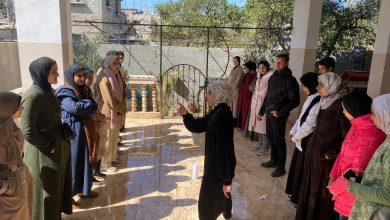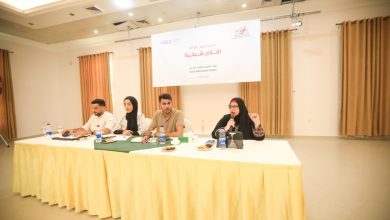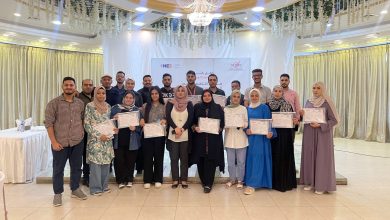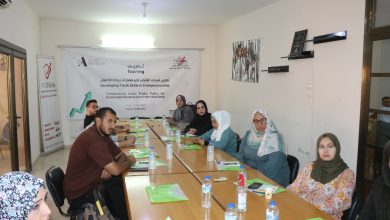Workshop on: “How Should the Palestinian Youth React In Times of Disasters and Crisis?”
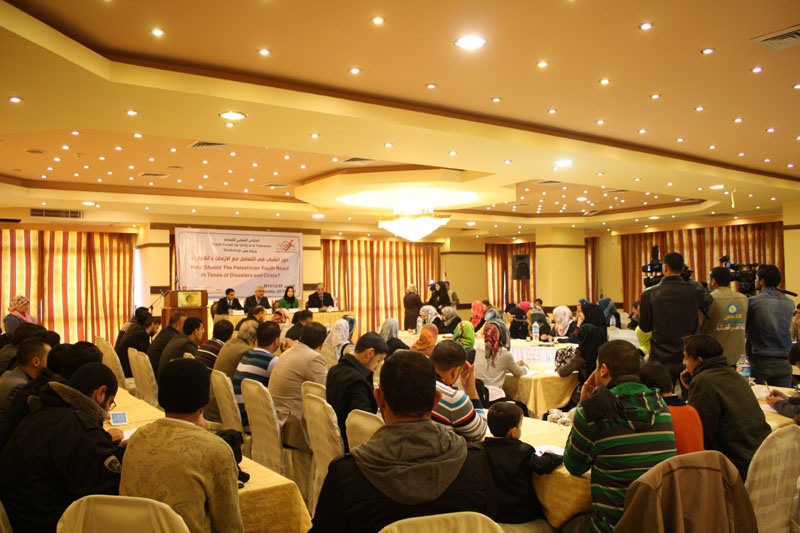
In continuation to its work on crucial and politically sensitive issues, Pal-Think for Strategic Studies and its Youth Forum for Unity and Tolerance organized a workshop, which was attended by 200 of Gaza’s youth. It was yet another recognized effort to provide a healthy and promising environment for the Palestinian youth in Gaza, where they can have the chance to speak and be heard by publicly discussing critical issues. The workshop focused on the controversial subject of Palestinians youth’s reaction and role in times of disasters and crises in Gaza Strip. With an audience of more than 200 people, including young male and female activists, representing a variety of social and political sectors and affiliations in the Gaza Strip, the workshop was deemed successful not only owing to the public and media attention it received and the critical importance of the topic of discussion but also because of the insightful recommendations and conclusions it provided.
In his opening speech, Mr. Omar Shaban, founder and director of Pal-Think for Strategic Studies stated: “Palestinian youth had a prominent role in the rescue and relief efforts to help the victims of the most affected areas during the latest natural disaster in Gaza. Such youth’s effort is an important message for officials who always ignore their role in crisis management, trying to put them in the background of the Palestinian scenery, even though they make up about 50 % of Palestinian society”.
Ayah Bashir, a member of The Youth Forum for Unity and Tolerance in Pal-Think, introduced the speakers and stressed the fact that youth should work out recommendations for the two governments in the Gaza Strip and West Bank, with regards to how the crisis could be managed and disasters, both man-made and natural, should be overcome
Director of Emergency Management Operations at the Civil Defense, Mr. Mohammed Al-Attar, talked about the ways of intervening during rescue operations pointing out that the disaster is divided into two phases. The first phase is to prepare for a disaster, and the second one is to deal with the disaster, adding that to overcome the disaster with minimal costs requires a good and inclusive plan.
Talking about the Role of the Palestinian Red Crescent in the relief operations, Dr. Khalil Abu ElFol mentioned that “in any country in the world there must be a national plan which define the responsibilities and the role of each ministry to manage the crisis”, adding that the Red Crescent Society launched a national plan to develop the capacity of the emergency sector, but unfortunately it has not been applied to until now.
Journalist Rawan AlKatari talked about the role of media in dealing with the latest disaster, and stressed that the journalists are unknown soldiers in the field as they carry doing their duty towards their people. Youth Activist, Adeeb Abdelhaleem, explained the concept of volunteerism and how to enhance it among the youth of Gaza.
There were many valuable contributions from the audience through questions and comments. In their discussion and responses to these questions, all of the speakers agreed on the important role of youth movements in strengthening their role in challenging their current issues. Also the key role of civil society organizations was mentioned in providing a safe environment for youth to volunteer.
At the end of the workshop, all participants called for:
• Concerned civil society organizations to provide training workshops for youth on how to deal with disasters and crises so that they can work in an organized way.
• The youth to work and think together and put aside their partisan differences for the sake of their community,
• The development of a new law that protects youth’s rights when volunteering.
• The provision of a safe and healthy environment for youth to develop their skills.
• The inclusion of the concept of volunteerism, its values and how to deal with disasters and crises in the Palestinian curriculum.


